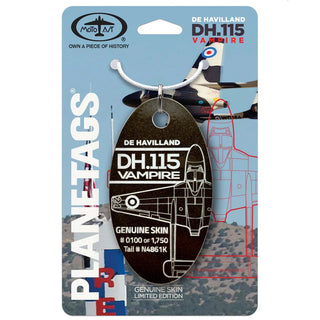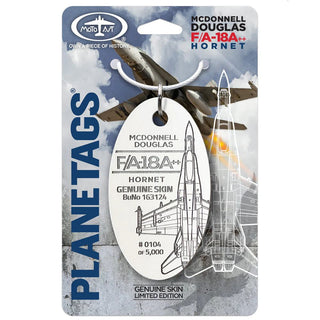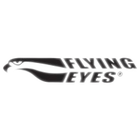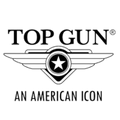Wolfgang Langewiesche first soloed in 1934 in Chicago.
Early in his flying he was struck by a strange discrepancy: in piloting, the words and the realities did not agree. What pilots claimed to be doing in flying an airplane, was not what they did in practice. Langewiesche set himself the task of describing more accurately and realistically what the pilot really does when he flies. The first result was a series of articles in Air Facts, analyzing various points of piloting technique. In 1944 Stick and Rudder was published.

WHAT'S IN STICK AND RUDDER:
- The invisible secret of all heavier-than-air flight: the Angle of Attack. What it is, and why it can't be seen. How lift is made, and what the pilot has to do with it.
- Why airplanes stall How do you know you're about to stall?
- The landing approach. How the pilot's eye functions in judging the approach.
- The visual clues by which an experienced pilot unconsciously judges: how you can quickly learn to use them.
- "The Spot that does not move." This is the first statement of this phenomenon. A foolproof method of making a landing approach across pole lines and trees.
- The elevator and the throttle. One controls the speed, the other controls climb and descent. Which is which?
- The paradox of the glide. By pointing the nose down less steeply, you descend more steeply. By pointing the nose down more steeply, you can glide further.
- What's the rudder for? The rudder does NOT turn the airplane the way a boat's rudder turns the boat. Then what does it do?
- How a turn is flown. The role of ailerons, rudder, and elevator in making a turn.
- The landing--how it's made. The visual clues that tell you where the ground is.
- The "tail-dragger" landing gear and what's tricky about it. This is probably the only analysis of tail-draggers now available to those who want to fly one.
- The tricycle landing gear and what's so good about it. A strong advocacy of the tricycle gear written at a time when almost all civil airplanes were taildraggers.
- Why the airplane doesn't feel the wind.
- Why the airplane usually flies a little sidewise.
- Plus: a chapter on Air Accidents by Leighton Collins, founder and editor of AIR FACTS. His analyses of aviation's safety problems have deeply influenced pilots and aeronautical engineers and have contributed to the benign characteristics of today's airplane.
Stick and Rudder is the first exact analysis of the art of flying ever attempted. It has been continously in print for thirty-three years. It shows precisely what the pilot does when he flies, just how he does it, and why.
Because the basics are largely unchanging, the book therefore is applicable to large airplanes and small, old airplanes and new, and is of interest not only to the learner but also to the accomplished pilot and to the instructor himself.
When Stick and Rudder first came out, some of its contents were considered highly controversial. In recent years its formulations have become widely accepted. Pilots and flight instructors have found that the book works.
Today several excellent manuals offer the pilot accurate and valuable technical information. But Stick and Rudder remains the leading think-book on the art of flying. One thorough reading of it is the equivalent of many hours of practice.
From the Back Cover
WHAT'S IN STICK AND RUDDER:
* The invisible secret of all heavier-than-air flight--the Angle of Attack. What it is, and why it can't be seen. How lift is made, and what the pilot has to do with it.
* Why airplanes stall
* How do you know you're about to stall?
* The landing approach. How the pilot's eye functions in judging the approach. The visual clues by which an experienced pilot unconsciously judges: how you can quickly learn to use them.
* "The Spot that does not move." This is the first statement of this phenomenon. A foolproof method of making a landing approach across pole lines and trees.
* The elevator and the throttle. One controls the speed, the other controls climb and descent. Which is which?
* The paradox of the glide. By pointing the nose down less steeply, you descend more steeply. By pointing the nose down more steeply, you can glide further.
* What's the rudder for? The rudder does NOT turn the airplane the way a boat's rudder turns the boat. Then what does it do?
* How a turn is flown. The role of ailerons, rudder, and elevator in making a turn.
* The landing--how it's made. The visual clues that tell you where the ground is.
* The "tail-dragger" landing gear and what's tricky about it. This is probably the only analysis of tail-draggers now available to those who want to fly one.
* The tricycle landing gear and what's so good about it. A strong advocacy of the tricycle gear written at a time when almost all civil airplanes were taildraggers.
* Why the airplane doesn't feel the wind. Why the airplane usually flies a little sidewise.
* Plus: a chapter on Air Accidents by Leighton Collins, founder and editor of AIR FACTS. His analyses of aviation's safety problems have deeply influenced pilots and aeronautical engineers and have contributed to the benign characteristics of today's airplane.
FLAP COPY
STICK AND RUDDER is the first exact analysis of the art of flying ever attempted. It has been continously in print for thirty-three years, and has enjoyed steadily increasing sales. Flight instructors have found that the book does indeed explain important phases of the art of flying, in a way the learner can use. It shows precisely what the pilot does when he flies, just how he does it, and why.
These basics are largely unchanging. The book therefore is applicable to large airplanes and small, old airplanes and new, and is of interest not only to the learner but also to the accomplished pilot and to the instructor himself.
When STICK AND RUDDER first came out, some of its contents were considered highly controversial. In recent years its formulations have become widely accepted. Pilots and flight instructors have found that the book works.
Today several excellent manuals offer the pilot accurate and valuable technical information. But STICK AND RUDDER remains the leading think-book on the art of flying.
One thorough reading of it should be the equivalent of many hours of practice.
Customers Also Bought
Product title
Vendor
$19.99 | $24.99
Product title
Vendor
$19.99 | $24.99
Product title
Vendor
$19.99 | $24.99
Product title
Vendor
$19.99 | $24.99
$425
$1,274.00 | $1,699.00
$412
$1,238.00 | $1,650.00
$400
$1,199.00 | $1,599.00
$387
$1,162.00 | $1,549.00
$312
$938.00 | $1,250.00
$300
$899.00 | $1,199.00
$300
$899.00 | $1,199.00
$300
$899.00 | $1,199.00
$300
$899.00 | $1,199.00
$237































